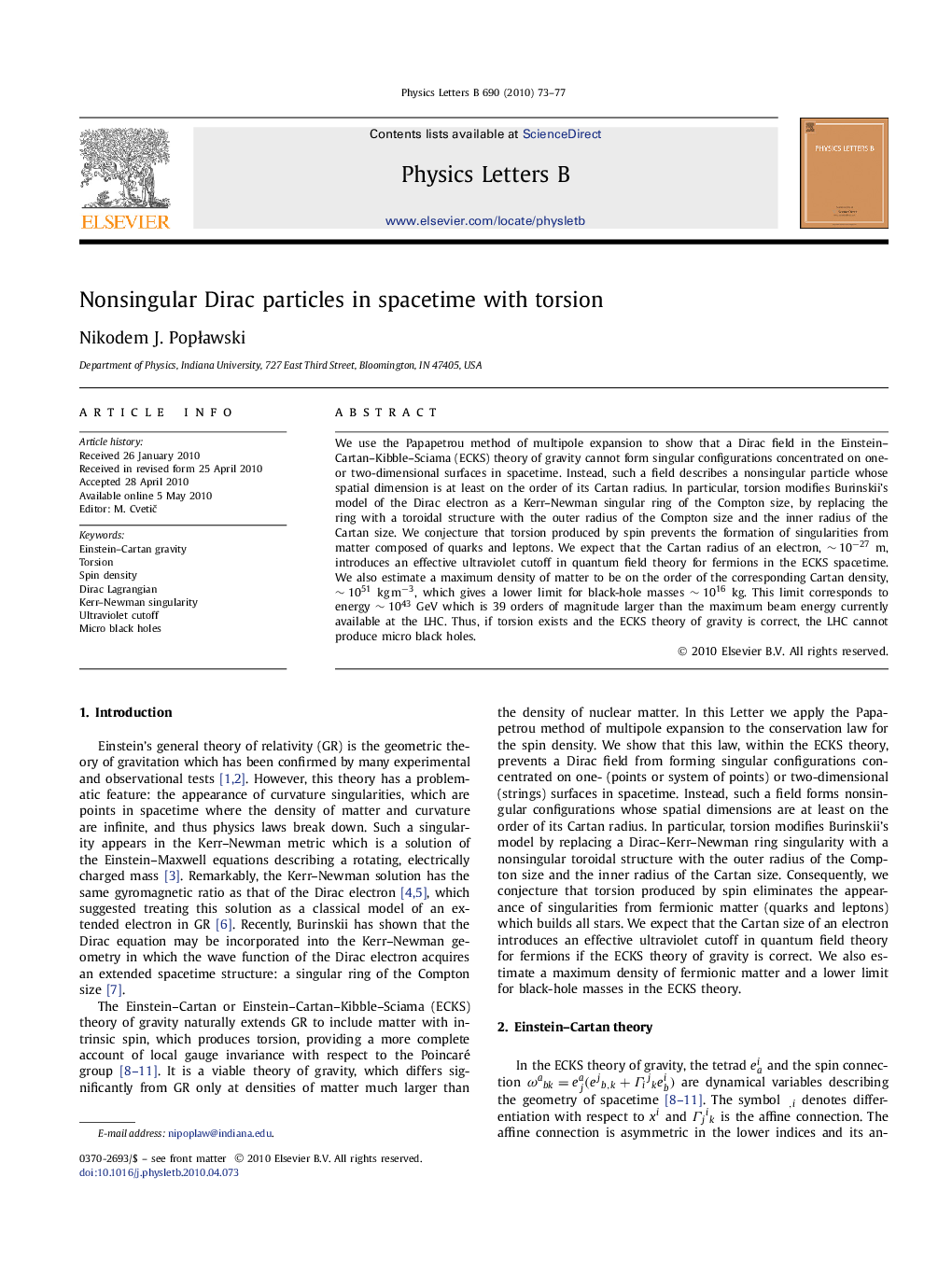| Article ID | Journal | Published Year | Pages | File Type |
|---|---|---|---|---|
| 10724330 | Physics Letters B | 2010 | 5 Pages |
Abstract
We use the Papapetrou method of multipole expansion to show that a Dirac field in the Einstein-Cartan-Kibble-Sciama (ECKS) theory of gravity cannot form singular configurations concentrated on one- or two-dimensional surfaces in spacetime. Instead, such a field describes a nonsingular particle whose spatial dimension is at least on the order of its Cartan radius. In particular, torsion modifies Burinskii's model of the Dirac electron as a Kerr-Newman singular ring of the Compton size, by replacing the ring with a toroidal structure with the outer radius of the Compton size and the inner radius of the Cartan size. We conjecture that torsion produced by spin prevents the formation of singularities from matter composed of quarks and leptons. We expect that the Cartan radius of an electron, â¼10â27m, introduces an effective ultraviolet cutoff in quantum field theory for fermions in the ECKS spacetime. We also estimate a maximum density of matter to be on the order of the corresponding Cartan density, â¼1051kgmâ3, which gives a lower limit for black-hole masses â¼1016kg. This limit corresponds to energy â¼1043GeV which is 39 orders of magnitude larger than the maximum beam energy currently available at the LHC. Thus, if torsion exists and the ECKS theory of gravity is correct, the LHC cannot produce micro black holes.
Keywords
Related Topics
Physical Sciences and Engineering
Physics and Astronomy
Nuclear and High Energy Physics
Authors
Nikodem J. PopÅawski,
